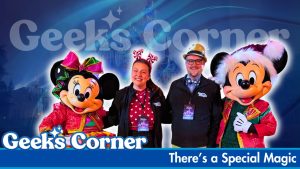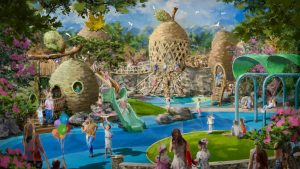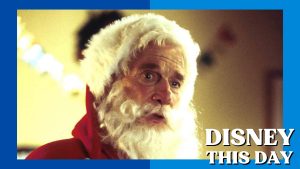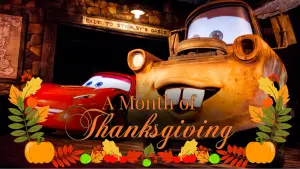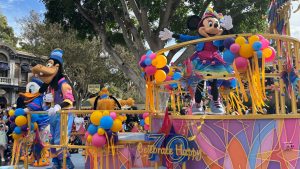Last month’s article was all about an auspicious early July opening (Aladdin’s Oasis, if you missed it). This month’s is all about a quiet closure that took place near the end of July. One of Main Street’s older tenants, in continuous operation since 1955 in fact, closed its doors for the last time on July 28, 1993.
Today, many people may find the idea of a functional bank on Main Street kind of hard to believe. But then, Walt wanted the fantasy of his quaint, turn-of-the-century Main Street grounded in reality. So the original shops not only included a soda fountain, silent movie house and mercantile, but a butcher shop, apothecary and even a lady’s “intimate apparel” shop as well.
The bank was not just an historical exhibit, but a fully operational branch of the Bank of America. It even had a theft proof vault with an ornately decorated door. This location had an unusual distinction, particularly in the 1950s. It was open seven days a week, and on major holidays. “Banker’s hours” is a term that referred to the fact that in those days banks opened late, closed early, and did not even open on weekends. It was said that businesses in Orange County would send their New Year’s Eve receipts to the Disneyland Bank of America, since every other branch was closed on New Year’s Day.
Walt’s choice of the Bank of America for his Town Square was a natural one. Back in the 1930s, every other bank in southern California had turned him down as he was trying to finance an expensive dream, the first feature length animated motion picture. He often told the story of presenting a rough preview of the film to Joseph Rosenberg of the Bank of America, who sat in silence through the entire presentation. Just before driving away from the studio, Rosenberg said, “Goodbye. That thing is going to make a hatful of money.” The Bank of America financed Snow White and the Seven Dwarfs, as well as many Disney projects that followed.
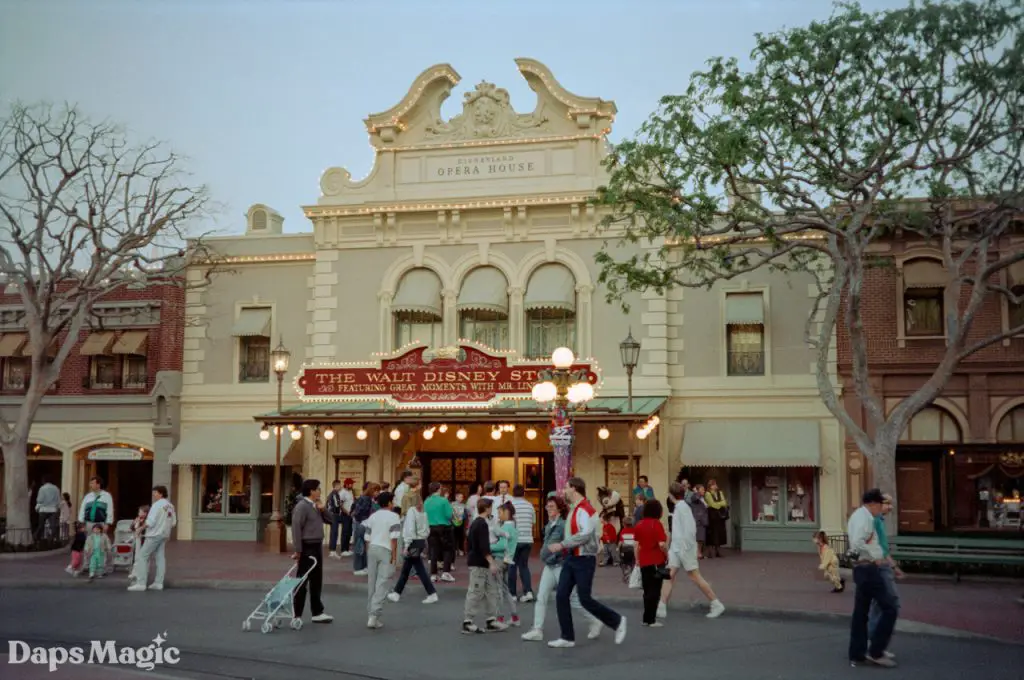
Although the bank occupied a fairly choice location, anchoring the southeast corner of Town Square, photos of it are somewhat scarce. Trees obscured the corner, the building itself was somewhat plain, and it was definitely overshadowed by the far more ornate and prominently placed Opera House, occupying the same block.
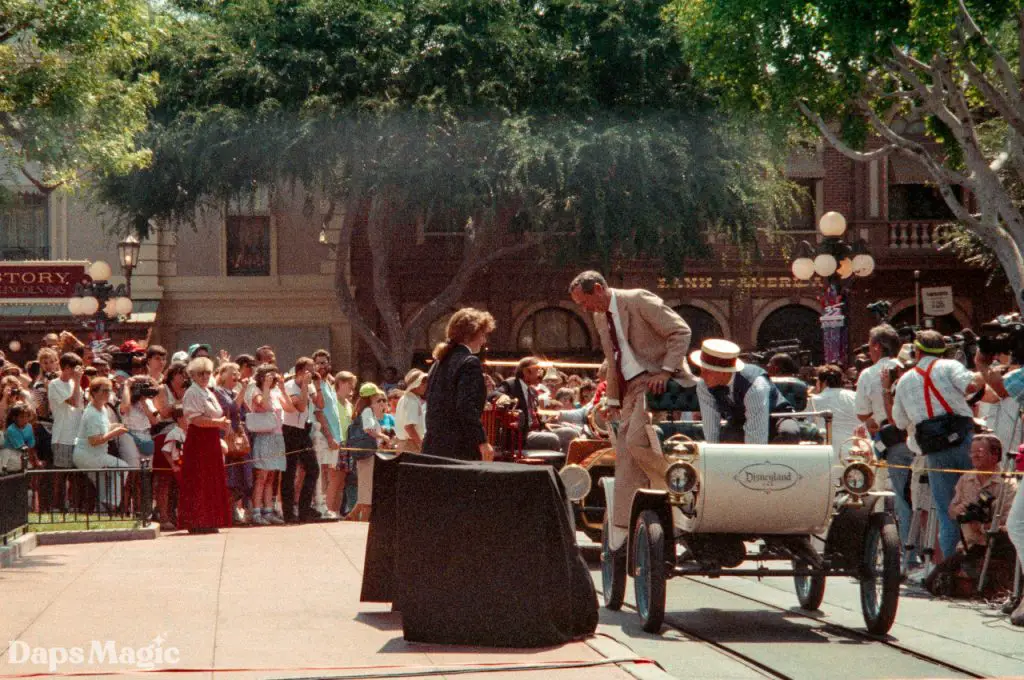
In this photo of Roy E. Disney, arriving for the July 17, 1990 re-dedication ceremony, you can see the gold lettering for the Bank of America peeking through the trees just right of center. The entrance to the bank is on the right edge of the photo.

This simplified line drawing depicts the entire bank. It is somewhat deceptive, though. The bank does occupy a “five bay” section of the building, with two sets of windows flanking the formal entrance at center. But the actual building has two more identical bays between the bank and the Opera House. In 1955, this narrow section housed the Main Street Realty. The realty promoted Apple Valley, a new development to the north east of the Los Angeles Basin. Hollywood celebrities Bob Hope, Marilyn Monroe and John Wayne were frequent visitors to Apple Valley, and Roy Rogers and Dale Evans owned a ranch in the area.
Among Disneyland collectors, the Town Square Realty offered a prized souvenir. Packets of actual “dirt” from Disneyland were offered, along with a title deed. The small green packets stamped in gold are still offered for sale from time to time.

That line drawing could be found in another prized souvenir, the free Bank of America Guide to Disneyland. In 1955 they offered a foldout brochure with stylized drawings showing each of the “cardinal realms” of Disneyland on the cover. Inside was a somewhat simple line drawing map.

For 1956 they increased the size and included what many believe is the most beautiful early Disneyland map. Of greatest significance is the exhaustive list of every attraction, shop and dining location in the park at that time.

Also shown, and described, were the exclusive Bank of America Disneyland Money Orders. Offered at no additional cost, there were three designs, for one, five, and ten dollars. The one dollar design depicted an engine of the Disneyland Railroad, the ten the Mark Twain steamboat, and the five was the Bank of America building itself.

The money orders are very scarce, as they could be (and were) spent as actual money. Here is an unused one dollar money order, with its matching receipt.

In later years, the Bank of America also sponsored the it’s a small world attraction at Disneyland, which had debuted at the New York’s World Fair. A brochure telling more about the history of the bank itself was issued in 1969, with a back cover that touted their sponsorship of “The Happiest Cruise That ever Sailed.”
By 1993 winds of change at Disney and in the banking industry itself led to the decision to close this branch. Curiously, after the removal of the Bank of America, the building was renamed the Bank of Main Street, despite the fact that banking services were no longer offered (aside from an ATM). For many years it operated as a center for processing Annual Passes. After another major refurbishment, it reopened in 2009 as the Disney Gallery, offering high end collectibles and souvenirs. The vault, still in place since 1955, is used to display particularly significant artifacts.
Another vestige of the building’s original use is the cash counter, to your right as you enter the shop. To transport yourself back to 1955, simply imagine the quaint teller’s window reproduced from the single station at the south to the opposite wall to the north. The vault will be behind the counter (where it belongs) and you will be approaching the original counter of Disneyland’s own turn-of-the-century bank, brought to you by the Bank of America.


